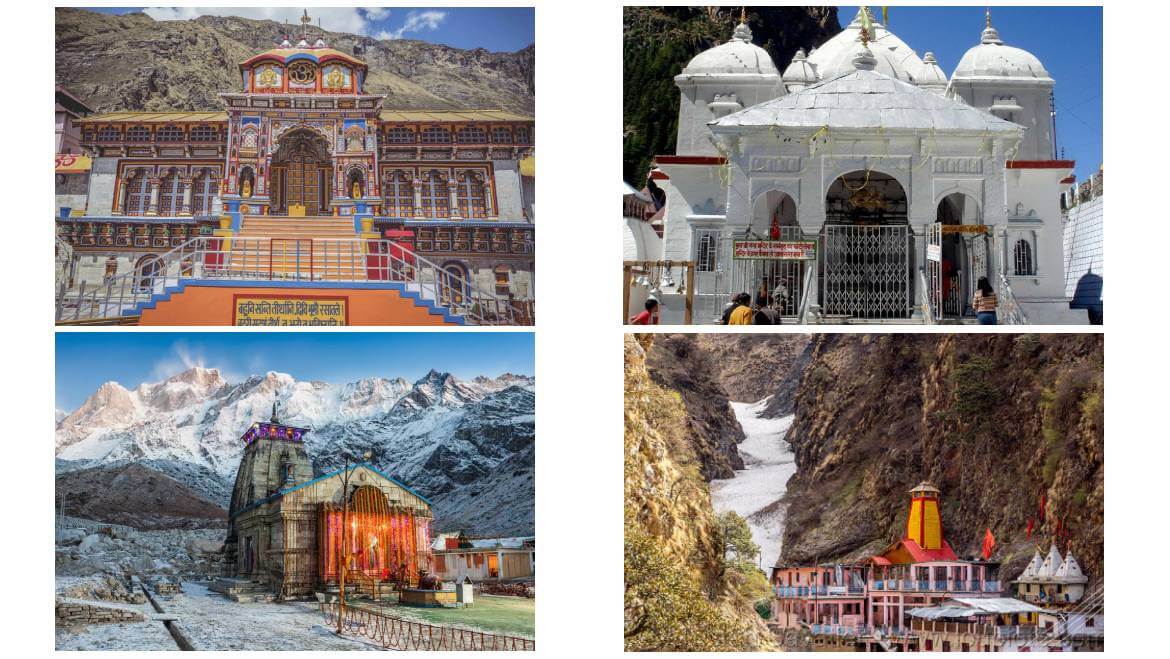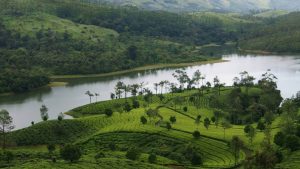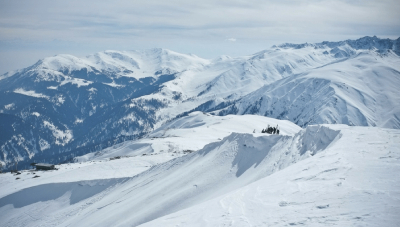Uttarakhand is of great spiritual value to Hindu devotees. Lofty Himalayan peaks on all the sides gives it a divine aura. The blissful state of Uttarakhand incorporates the sacred shrines of Yamunotri, Gangotri, Badrinath and Kedarnath, known as Chota Char Dham.
Chota Char Dham is the most highlighted spiritual tour in the Uttarakhand Himalayas. These shrines are the crowning glory of lofty Himalayan peaks and the heart of Uttarakhand Tourism.
Pilgrims from across the world undertake the difficult journey to reach these shrines. The sacred shrine of Yamunotri belongs to Goddess Yamuna and the sacred shrine of Gangotri symbolizes Goddess Ganga’s descending on Earth.
On the other hand Lord Badrinath (Vishnu) blesses the pilgrims in the form of a sacred shrine of Badrinath. The bliss of soul-searching ends in the serene shrine of Lord Kedarnath which is dedicated to Lord Shiva.
The grandeur and history of these sacred shrines has been luring devotees for ages. There is a long and affluent history added to all the four shrines.
Recommended Tour Packages
The History of Badrinath
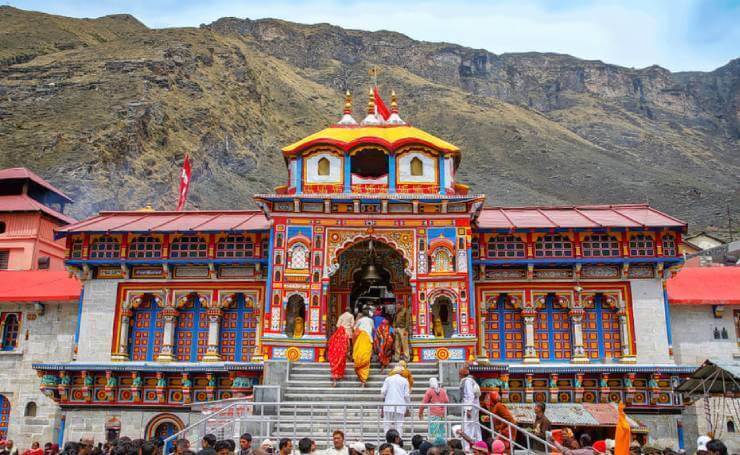
Nestled among the Himalayan range of Chamoli district is the Badrinath Temple, set right at the shore of Alaknanda River. This pious shrine was established by Adi Guru Shankaracharya in 8th century to offer new life and meaning to Hinduism. As per the myths, it was ppreviouly a residence of Goddess Parvati and Lord Shiva. Later on, Lord Vishnu made Badrinath as his own abode.
Legends around Badrinath
- According to Padam Puran, Lord Vishnu performed rigorous penance in the hills of Badrinath. His consort, Goddess Lakshmi took the form of a berry tree to protect him from the harsh sun. Thus, naming the town as ‘Badrinath’ which stands for ‘Lord of the badri’ where badri is the local name for wild berry and nath means lord.
- Badrinath is also the place where Mahabharata finds its traces. According to myths, the five Pandavas along with their wife Draupadi took their last pilgrimage to heaven by ascending the slopes of a peak called ‘Swargarohini’ or the ‘Ascent to Heavan’.
- According to legends, few kilometers from the shrine is a cave in Mana Village where the great sage Ved Vyasa wrote the greatest Indian epic, Mahabharata.
Also Read: Shri Badrinath Temple Opening & Closing Dates
The History of Kedarnath
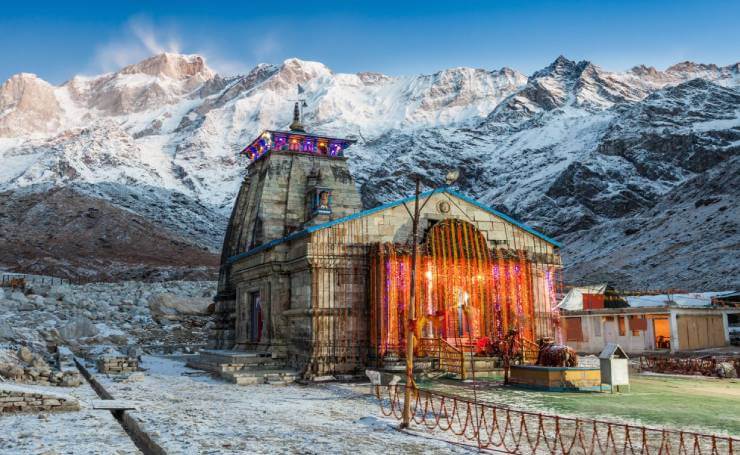
Set at the bank of sacred Mandakini River, Kedarnath Temple is one of the 12 jyotirlingas of Lord Shiva. In Garhwal Himalayas of Uttarakhand, this shrine remains open between the Akshay Tritiya to Kartik Purnima.
Devotees pay homage to Lord Shiva as the Lord of Kedar Khand, which was once the name of this region. It is said that this structure was edified by Adi Shankaracharya in 8th century.
Legends around Kedarnath
As per the legends, after the battle of Mahabharata, Pandava arrived to Guptkashi in the region of Kedar Khand in order to get the blessings of Lord Shiva and to wash away their sins of killing their own relatives.
However, Lord Shiva did not want appeared in front of them and thus he transformed himself into a bull and hide himself in group of cattle and started grazing. Bhima identified him. While the cattle was returning to their habitats, Bhima stood by stretching leg over two boulders and made allow cattle to pass under his legs.
Lord Shiva tried to escape and started merging himself in to the earth. Only the hump was caught by Bhima. On this, Lord Shiva became happy and appeared in front of Pandavas. Therefore, the hump of bull is revered at Kedarnath.
Also Read: Shri Kedarnath Temple Opening & Closing Dates
The History of Gangotri
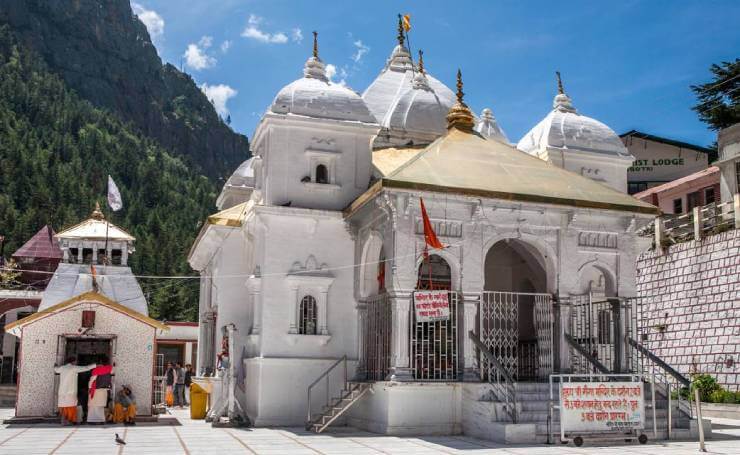
The consecrated shrine is dedicated to holy Ganges. It is believed that the river washes all the sins and makes the souls of devotees pious. It is the way to salvation.
This shrine is primarily known as the originating point of Ganges River. It is the place where Lord Shiva took Ganges in his hair curls. Gaumukh is the place where the Ganges is emerged from Gangotri Glacier.
Legends around Gangotri
On Bhagirath Shila, which is positioned near temple, it is said that King Bhagirath performed penance to please Goddess Ganga and make her agree to come on earth from heaven.
To reduce the shattering pace of Ganges while it was coming to earth, Lord Shiva took the stream in His matted hair. There is a submerged Shivlinga where it is said that Lord Shiva sat to receive the stream.
Also Read: Gangotri Temple Opening & Closing Dates
The History of Yamunotri
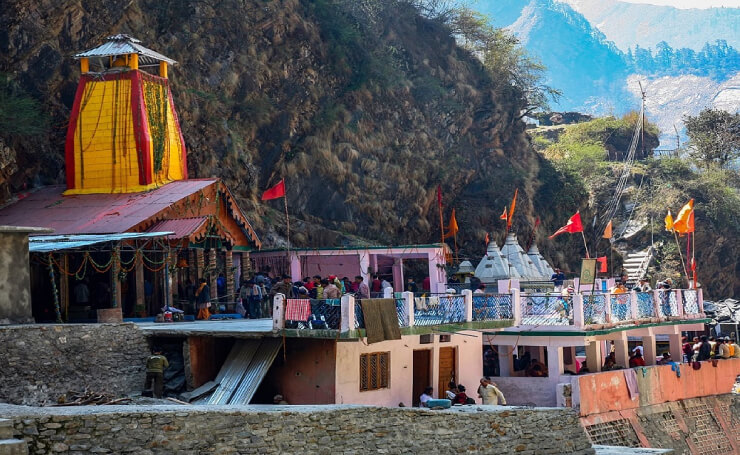
Yamunotri is the source of sacred Yamuna River. It is positioned in Uttarkashi District and lies at the elevation of about 3293 meters. It is famous for thermal springs found there.
The actual source of the river is a frozen lake and glacier positioned at the Kalin Mountain at an elevation about of 4421 meters. The shrine is termed highly consecrated and it is said that the sins of the devotee wash away through visiting this shrine. There is a trek incorporated to reach this place.
Legends around Yamunotri
The legends say that that the sage Asit Muni used to reside here. He bathed daily all his life in Yamuna and Ganga. In his old age, he was unable to go Gangotri and thus for him, a stream of Ganga appeared opposite the stream of Yamunotri.
The daughter of Sun God, Yamuna is believed to be the mother of humans, offering them the nourishment. Tehri Naresh Sudarshan Shah built the Yamunotri Temple in 1839. However, the temple was damaged severely due to an earthquake and Maharani Gularia of Jaipur reconstructed this temple in late 19th century.
The Surya Kund, which is a hot water spring situated near Divyashila, was presented by God Surya to his daughter. Pilgrims take sacred bath in Taptakund and cook potato and rice in Suryakund as well.
Also Read: Shri Yamunotri Dham Opening & Closing Dates
Pay a visit to Chota Chardham in Uttarakhand and get your soul drenched in spirituality and calmness.
Also Check out: 4 Dham Pilgrimage Tour Packages
Like & Follow our social media accounts at Twitter, Facebook, Linkedin & Instagram for getting the latest updates & offers on holiday packages.
Disclaimer: We do not take credit for some of the licenced paid images used in our blogs, whether from Google Images, Fotolia & Shutterstock. All such images are the copyrights of their respective owners and we try to provide credit for them wherever we can. If, however, any copyright image has been used on our blog, the concerned person can either mail us directly to remove the image or provide credit to whomsoever the image may belong to.
About the author
Having an experience of more than 16 yrs in the Himalayas, Arun is the main driving force & mentor at the Peak Adventure Tours, a leading adventure travel agency in India offers trekking tours in Indian Himalayas including Nepal, Bhutan & Tibet. A long history with exceptional experiences he is the “Marathon Man” in the field of adventure. Today Arun looks after the Peak Adventure and shapes & designs the venture of the organization. He is contributing to this blog as a regular guest author.

 +91-9212777225
+91-9212777225 Plan Your trip
Plan Your trip